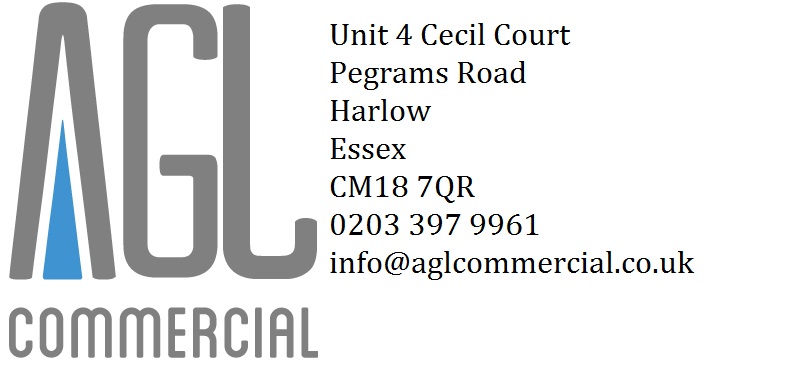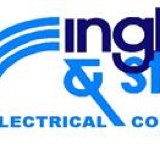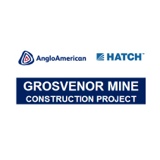Information
-
Document No.
-
Audit Title
-
Client / Site
-
Conducted on
-
Prepared by
-
Location
-
Personnel
1. General Information
-
Are contractor's SDS's available, on file?
-
OSHA poster posted? OSHA 300A Summary?
-
Emergency phone numbers posted?
-
Are weekly "Toolbox Talks" current and up to date?
-
Are work areas properly signed and barricaded?
-
Are First Aid supplies available and adequate?
-
Is the site accessible to emergency vehicles?
2. Housekeeping and Sanitation
-
General neatness of work area?
-
Are sanitary facilities adequate and clean?
-
Is there an adequate supply of drinking water and cups?
-
Are waste containers provided, used and emptied regularly?
-
Is temporary lighting adequate and elevated?
-
Are light bulbs protected from breakage?
-
Are passageways and walkways kept clear?
-
Are projecting nails removed or bent over?
-
Are cords and leads off the floor?
-
Does housekeeping display a positive professional image?
3. Personal Protective Equipment
-
Are hard hats being worn by all personnel?
-
Eye and face protection worn as required?
-
Is footwear appropriate?
-
Is clothing is accordance with company policy?
-
Reflective garment worn by all site personnel?
-
Respirators used when necessary?
-
Hearing protection worn when / where required?
4. Fire Prevention and Protection
-
Are fire extinguishers adequate, mounted and inspected?
-
Are fire extinguishers accessible within 100 feet?
-
"No Smoking" posted and enforced near flammables?
-
Are containers appropriate for handling and storage of flammable liquids?
-
Is a 20lb. "B" rated extinguisher provided not less than 25 or more than 75 feet from fuel storage tanks?
-
Are fuel tanks stored at least 20 feet from any building?
-
Are LP gas cylinders properly stored and secured outside?
-
Are LP gas cylinders and tanks protected from vehicular damage?
5. Material Handling
-
Are materials properly stored and stacked?
-
Are workers using proper lifting methods to avoid injury?
-
Are tag lines used to guide loads?
-
Rigging inspected; defective equipment removed from service?
-
Are forklifts inspected daily, on each shift prior to use?
-
Are forklifts, skid steers etc., equipped with a working back up alarm?
6. Hand, Power and Powder Actuated Tools
-
Are hand and power tools inspected regularly, prior to use?
-
Are electric tools properly grounded or double insulated?
-
Are all required safety guards in place?
-
Do powder actuated tool users have "Operator Training Cards"?
-
Do powder actuated tool users wear eye and hearing protection?
7. Welding and Cutting
-
Are safety caps replaced when cylinders not in use?
-
Are stored oxygen and fuel gas cylinders separated by 20 feet and secured?
-
Are leads and hoses in good condition?
-
Are fire extinguishers accessible within the immediate work area?
-
Are welding cables properly and securely grounded?
-
Is there adequate ventilation for cutting and welding operations?
-
Is a fire watch in place? By whom?
-
Burning or welding goggles or shields used? Other PPE?
8. Electrical
-
Are extension cords with missing ground prong, fraying or exposed conductors removed from service?
-
Are extension cords protected from damage from equipment, doors, windows and other pinch points?
-
Are extension cords designed for hard or extra hard usage?
-
Are ground fault circuit interrupters in use? Tested?
-
Are terminal boxes equipped with required covers?
-
Are circuits labeled as to their control?
-
Are electrical dangers posted with the proper warning?
9. Scaffolding
-
Are daily inspections conducted by a competent person?
-
Are footings sound and rigid, and capable of supporting the imposed loads without settling or displacement?
-
Do scaffold bear on mudsills and baseplates?
-
Are scaffolds plumb and level and properly braced and cross-braced?
-
Are workers protected from falls of six feet or more?
-
Are scaffolds tied or braced to the structure as required?
-
Are guardrails installed on all open sides and ends?
-
Are working platforms fully decked? Planking sound and sturdy?
-
Is proper access provided; no more than 2 feet up, out or down?
-
Do toeboards protect workers below from falling objects?
-
Are harnesses and lifelines used with suspended scaffolds?
-
Are lifelines anchored to an overhead structure separate from the scaffold?
-
Are PFAS's or fall restraints used with aerial lifts?
-
Are aerial lift operators trained and authorized?
10. Fall Protection and Prevention
-
Are guardrails or cables installed at 42", plus or minus 3"?
-
Are safety cables flagged at six foot intervals?
-
Are toeboards installed for falling object protection?
-
Are workers exposed to fall hazards tied off?
-
Are body harnesses used for fall protection? Belts for positioning?
-
Are personal fall arrest systems rigged to limit free fall to 6 feet?
-
Are wall and window opening guarded where necessary?
-
Are deck or floor openings covered or barricaded?
-
Are hole covers secure and labeled "Hole or Cover"?
-
Are materials stored at least 10 feet away from any elevated edge?
11. Cranes
-
Restricted from working within 20 feet of overhead power lines?<br>
-
Are crane and rigging inspections conducted daily prior to use?
-
Most recent annual and current monthly inspection on file?
-
Are mobile crane outriggers fully extended with wheels off the ground?
-
Is the swing radius barricaded?
-
Are hand signal charts posted?
-
Are workers kept from under suspended loads?
-
Are tag lines used for load control?
-
Aviation flags in place and waning lights functioning?
12. Trench and Excavations
-
Have underground utilities been located and identified?
-
Are activities directed and supervised by a competent person?
-
Does the competent person conduct daily inspections?
-
Is a protection system in place where operations are 5 feet or more in depth?
-
Are spoils stored at least 2 feet from the trench or excavation edge?
-
Ladder or safe means of access and egress where 4 feet or more deep?
-
All equipment a safe distance from the edge of trench or excavation?
-
Are trenches and excavations properly flagged or barricaded?
-
Are adjacent structures and encumbrances properly supported?
13. Concrete and Masonry
-
Is formwork and shoring adequate to support all loads?
-
Are reinforcing bars guarded or bent over?
-
Are workers protected from cement and silica dust? PPE in use?
-
Has a Limited Access Zone been established? Height of wall plus 4 feet?
-
Are masonry and precast walls adequately braced?
-
Are nails removed or bent over from stripped forms?
-
Are workers protected from falling objects during form removal?
-
Are clear pathways maintained through stripping areas?
-
Approved shoring plan available onsite?
14. Structural Steel
-
Strength of concrete and masonry sufficient to support imposed loads?
-
Written approval to begin steel erection transmitted to erector?
-
Are firm, graded and drained areas provided for materials, aerial and hoisting equipment?
-
Has the structural engineer approved the repair, replacement and / or modification of anchor bolts?
-
Was the erector given written notice of anchor bolt repair, replacement or modification?
-
Is perimeter fall protection in place?
-
Are workers prohibited from working directly below suspended loads?
-
Are loads rigged by a qualified rigger?
-
Are erectors protected from falls of 6 feet or more?
15. Stairs and Ladders
-
Are handrails and stair rails provided where required?
-
Are steps, stairs or ladders provided where breaks in elevation are 19 inches or greater?
-
Stairs kept clear of trash and debris?
-
Do extension ladders extend at least 36 inches above the landing?
-
Are ladders secured to prevent slipping, sliding or falling?
-
Are ladders inspected with broken or damaged ladders removed from service?
-
Are step ladders used in the open and locked position?
-
Is stepping or sitting on the top two rung of a stepladder prohibited?
-
Are ladders properly stored and secured?
-
Observations: Unsafe acts or practices:
-
Add signature
-
Select date









